Special Thanks to my brother for helping with this article. Cheers Paul!
One of the first devices that enabled Richard to delve into the world of electronic music; specifically the methods sequencing and sampling, was his utilisation of a Sinclair ZX 81 home micro computer. First released in 1981, the standard unexpanded ZX81 came with a mighty 1kb of RAM (read only memory) to exploit. To get some idea of how much memory this actually is, this paragraph you are currently reading takes up almost half of that allocated memory already! (Approximately 461 bytes!)
How did you get into sampling?
I started out making tape samples until I eventually got one of those kits from Sinclair – one of those build-it-yourself things for about 50 pounds. That’s what got me hooked on sampling.
Keyboard Magazine (May, 1994)
As you can imagine these were the nascent days of home computing and when it came to programming, a premium was placed on economy and optimisation. The CPU of the ZX81 was the Zilog Z80, at 3.5 MHz the processor of your average smartphone is approximately a thousand times faster. As a consequence of these limitations the first applications for computers such as the ZX81 were simple affairs such as very rudimentary text editors or accounting software.
‘I started programming when I was ten and that was really young for that era. Most people didn’t even know what a computer was. My parents didn’t have the slightest clue. Scientists and engineers had computers, not normal people. I had a ZX81, the second Sinclair computer [from 1981, the year Donkey Kong ruled the arcade halls, to get a picture of that time]. The thing had an input for a cassette deck, but that input was broken so I couldn’t play cassettes. The only solution was to program them myself on that tiny, clumsy little keyboard. The computer had about 1k of RAM, it took about thirty minutes to program a game. You could take the code from a computer magazine, but I remembered all the lines in my head. I had to program it every time I turned on the computer. After a while I knew which line did what and I could adjust them. That’s how it started.’
OOR Magazine (September, 2014)
From a modern viewpoint this might all seem most unimpressive, however at the time this was nothing short of a technological revolution, especially when viewed from the perspective of someone living through the post industrial greyness of the UK, at the beginning of the 1980s. To have access to a programmable computer from the comfort of your own bedroom with a huge library of software for an affordable price point was definitely something new.
It’s not surprising that Richard attributes his ownership of a Sinclair ZX81 as one of the most formative moments of his life:
What have been the most important events in your life?
“Buying a ZX81 computer. That was a really sorted event. I won a couple of programming competitions actually. I made a programme for the ZX81 to make sound and won 50 quid from a computer magazine. I always loved those noises. I got into computer games for the music. I’ve been starting to sample sounds off my old Spectrum actually.”
Mixmag (October 1996)
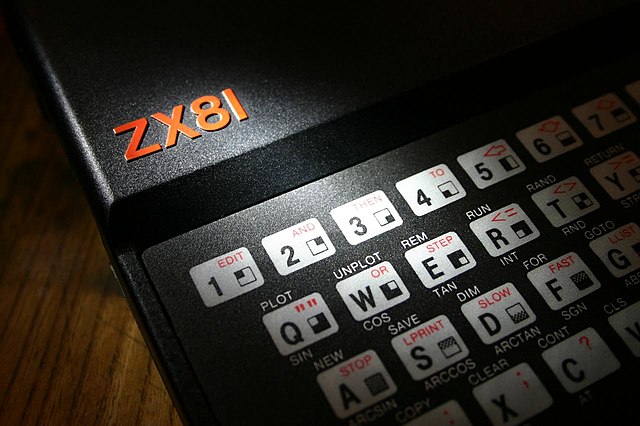
Richard tells us in the previous quote that one of the first applications he used his ZX81 for was to turn it into a primitive sort of synthesiser via a program written in Sinclair BASIC. We are then told he entered this program in a magazine competition where he was furnished with a crisp £50 note for his troubles. In an excellent piece of research a program that strongly resembles the one from Richard’s anecdote was uncovered several years ago in an ancient computer magazine from 1982.
This marvellous discovery can be attributed to Richard Lane. His original blog post is now lost to the mists of time but I’ve managed to track down the ZX81 program listing he discovered below named Organic Tunes by G. N. Owen from Leamington Spa. Of course this casts a dubious shadow on Richard’s claim that he created the program himself.
It’s is probable, however, that Richard did indeed type in a BASIC program listing to produce some crude sounds from his ZX81 at some point, whether it was Organic Tunes or something of his own creation I can’t say for certain but this program gives a good idea of the sounds Richard was wrangling from his ZX81 in the early 80’s.
I’ve included the full program listing for anyone who wants to try this out on the original hardware. Below is a video provided by my brother Paul (a Sinclair enthusiast!) of the program running under emulation. The tune being played is a rendition of twinkle twinkle little star.
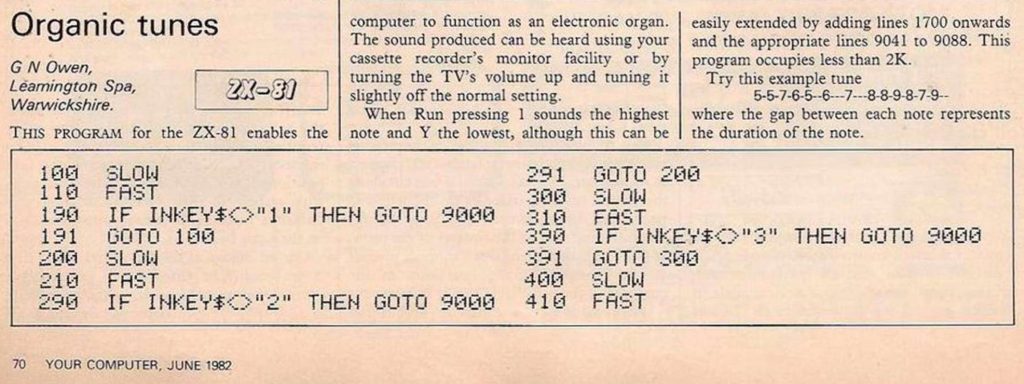
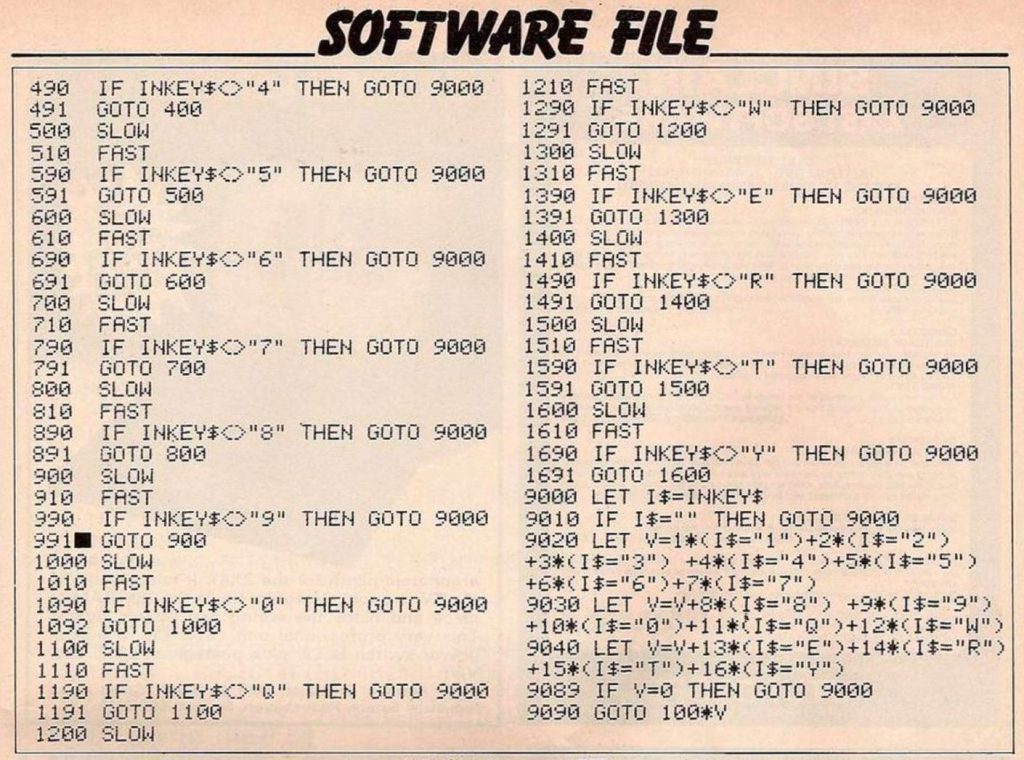
Richard also mentions that he created a primitive game around this same time period (approximately 1981/82), a sort of ski slalom simulator where the lesser and more signs i.e. < > represented flag poles for the character 8 to ski around. This anecdote sounds quite similar to the one about his music program, whether Richard is conflating two different events is yet to be determined, I’ll leave it up to the reader to make up their mind!
“I did win a game competition in a magazine when I was ten. I wrote a game for the ZX-81. It was a skiing game. You were a number ‘8’ and the ski poles were ‘lesser’ and ‘more’ signs.
Official PlayStation Magazine. (March 1999)
In the following quote the ZX81 competition story is again related, interestingly the details match the quote from several years earlier, so perhaps there is some truth in what Richard says after all. The second part of the quote is regarding Richard’s acquisition of a ZX Spectrum, a more capable successor to the ZX81. With the aid of hardware peripheral, Richard was able to record and manipulate samples in the digital domain for the first time:
He was a keen foot soldier in the early Eighties homes computer revolution. Actually, that’s putting it mildly. He was, by the sounds of things, King Of All Geeks.
‘When I was 11, I won £50 in a competition for writing this programme that made sound on a ZX81. Basically, you couldn’t make sound on a ZX81, but I played around with machine code and found some codes that returned the TV signal so that it made this really weird noise when you turned the volume up.’
Soon after, he graduated to making music on his ZX Spectrum using a primitive sampler. He still loves Spectrums, particularly the sound games make while they’re loading.
‘People who had them must have spent hours listening to that. It’s more extreme than any extreme noise music. In time you got to know the sound really well: “Oooh, good bit coming up here…” It was always the best, sonically, when it tried to load a picture. It would be “Iryurrrrrrrrrrrrrrghhh!” I always wanted to make my my music sound like a game. A danceable version of a Spectrum game. I’m almost there, I think.’
The Face Magazine (October 2001)
The Sinclair ZX Spectrum was first released in April of 1982 and was initially available with either 16 or 48k of RAM, a marked improvement over the ZX81. By the mid 1980’s Richard appears to have owned a 48k Spectrum on which he embarked on his first experimentations with digital sampling. It cannot be overstated what a cultural phenomena the Spectrum represented during the 1980’s particularly in Britain and certain parts of mainland Europe, a capable home microcomputer that with affordable software. The Spectrum was a ubiquitous part of popular culture in the 1980’s, being approximately the same age as Richard, my older brother owned several different models of Sinclair computers himself.
The Spectrum obviously made a large impression on Richard’s young mind as there have been several references to this computer in his music throughout the years (scroll down for further information). One of the most obvious references/tributes to the Spectrum is the rainbow motif on the top right hand corner of the Girl/Boy E.P front cover. It is a slightly modified version of the rainbow stripe found on the bottom right hand corner of all Sinclair Research model Spectrums.
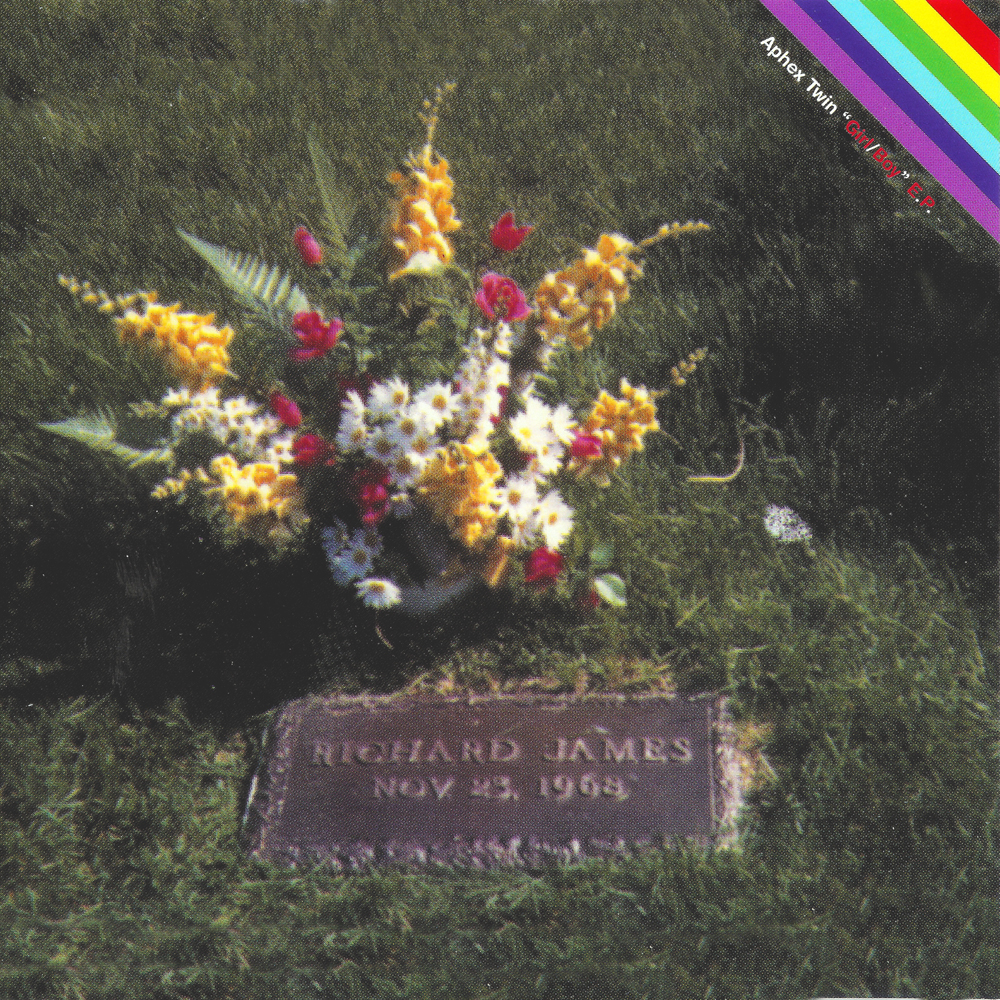
The primitive sampler referenced in the previous quote is the RAM Music Machine, a hardware peripheral first released for the ZX Spectrum in 1986. The Music Machine allowed the user to sample sounds via microphone directly to the Spectrums memory from which it could be manipulated in various ways such as changes in pitch and tempo, reversing the sample or looping it. The Music Machine came with some basic MIDI compatible sequencing software and a sampling suite, it also had a rudimentary drum kit with eight default sounds which could be replaced with your own kit of samples.
Although the sampling capability of The Music Machine was fairly primitive, with the resolution of samples being minimal so it could fit in the Spectrums limited memory, it was still a very impressive piece of kit for the home user of 1986. An equivalent hardware sampler of the era might set you back several thousand pounds, so to provide your home computer with sequencing and sampling functionality for the initial outlay of £50, must have seemed a very attractive proposition to Richard at the time.
“I first started with a Spectrum – I re-wrote all the software for the interface I bought – and I really liked it because I sat down and made it do exactly what I wanted it to. But obviously, being a Spectrum, it’s got a lot of restrictions.”
Music Technology Magazine (July 1993)
Richard James (Aphex Twin)
Melody Maker (27th November 1993)
SINCLAIR SPECTRUM: “I used to write my own sequencing programs on the Spectrum, believe it or not. I still built a lot of my own equipment. When I started out I didn’t have any money, so if I wanted to get anything different, I had to change what I had or make something.”
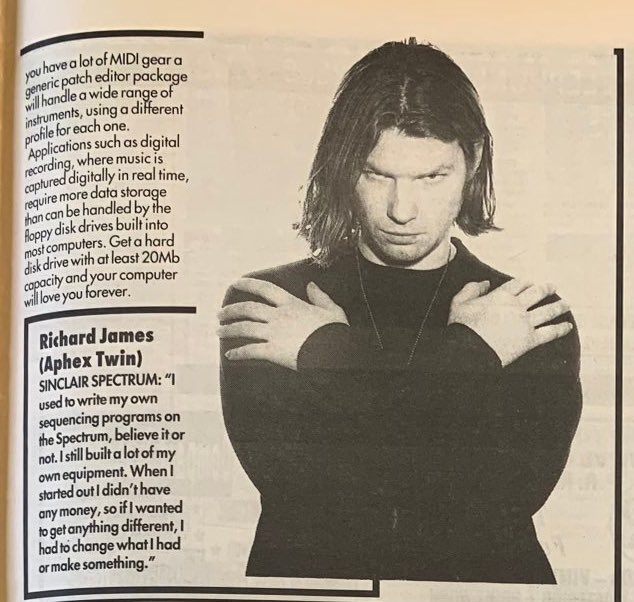
Aphex Twin picked up a sampler kit for his ZX spectrum at the same time. The difference being that while Morris was in his mid 20s, Aphex was only 14. “I started playing around with sounds when I was 12,” he explains, “I was doing weird things with tapes, making loops and playing them at different speeds. When I got the sampler I wrote software on the computer to make it run better.
Mixmag (December 1992)
In the quotes above from 1992/3, Richard claims that he essentially wrote his own software package to handle The Music Machine hardware, perhaps in an effort to circumvent limitations on sampling rates or other functionalities. This would indeed be an impressive feat, but certainly feasible with a working knowledge of machine code as he has stated in earlier quotes. Regardless of the validity of his claim I’ve no doubt he poked, prodded & modified the original program to do things it was initially designed not to do.
By his teenage years he was playing with a cheap synthesizer, a Sinclair Spectrum computer and a £50 sampler. The fact that his music ended up on tapes, he claims, was a mere by-product of making it. It didn’t occur to him to send them to record labels.
Select Magazine (May 1995)
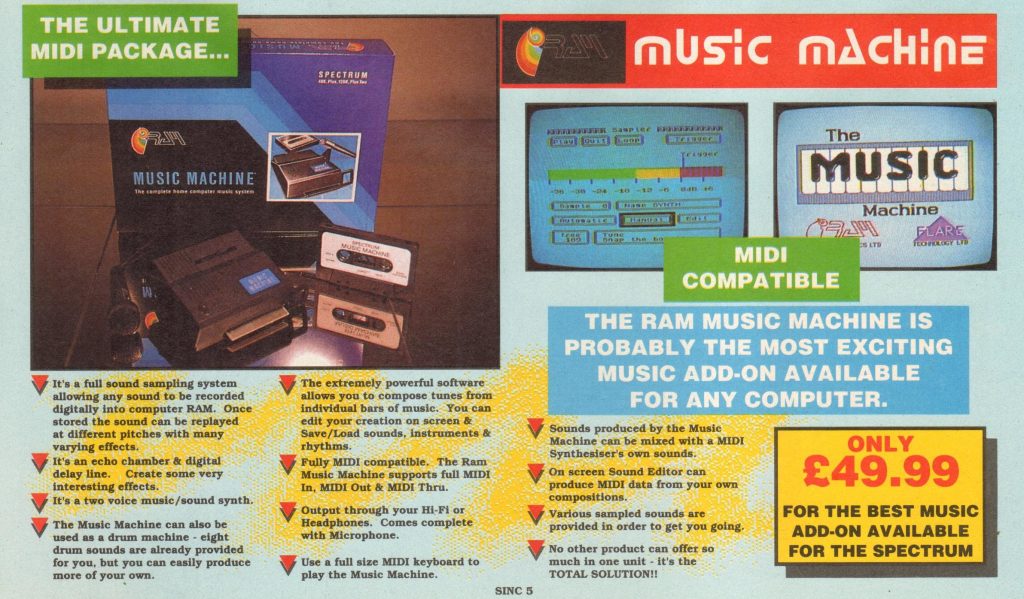
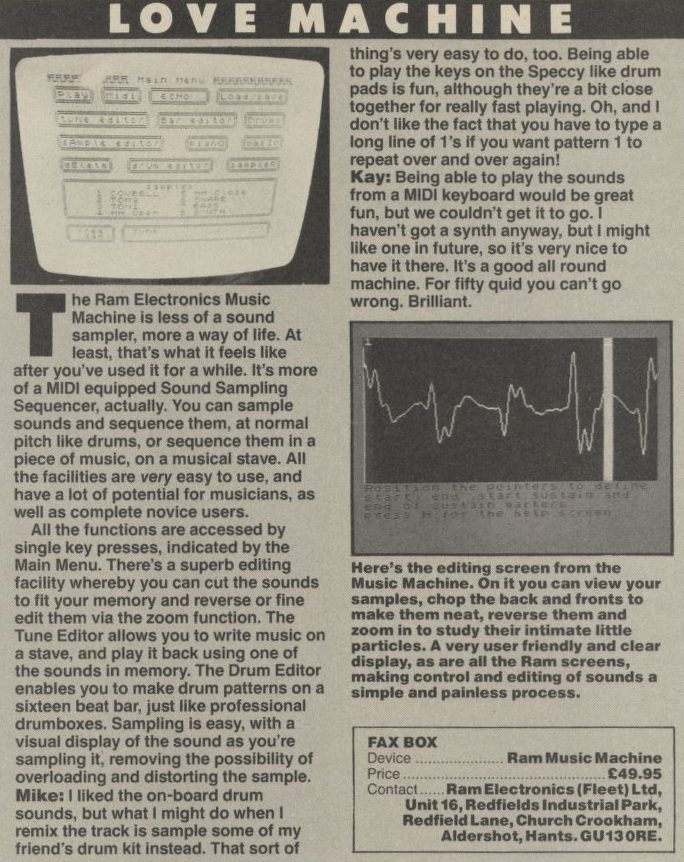
Spectrum 48k Beats1q (1986)

Released concurrently with the extensive Syrobonkers interview of November 2014 is Spectrum 48k Beats1q. This track dates from 1986 when Richard was going by the pre Aphex Twin pseudonym of Phonic Boy on Dope. This track is fascinating for several reasons; firstly it in one of the very earliest tracks made by Richard that is currently know about, and gives the listener an idea of what he was up to when he was only 14 or 15 years old.
Secondly Spectrum 48k Beats1q was composed primarily with the aid of a RAM Music Machine, its drum machine providing the percussion, the occasional sample and controlling both Yamaha DX100 & Roland SH101 synthesisers via MIDI output.
Richard actually started making music when he was 12 using ZX Spectrums (and you thought they were totally useless). “I’ve still got the stuff,” he laughs, “its all recorded on C15’s!”
Independent Music Catalogue (March 1993)
Apparently during this time period Richard was recording his music directly to C15 cassette tapes on a boombox via a homebrew mixer. This probably accounts for the relatively low sound quality of Spectrum 48k Beats1q as C15 cassette tapes (7.5 minutes per side) were only really intended for answering machines or storing program data. Music was never their intended purpose so their quality is suboptimal for musical purposes.
Personally I really like this suboptimal sound quality with plenty of tape hiss as you can tell its an artefact of the time done with plenty of enthusiasm. having messed around on some of these early home computers, they can be temperamental at the best of time so its quite impressive that anything worthwhile was wrangles out of them in a musical sense.

In more recent times Richard has surprising returned to the RAM Music Machine buying several of the hardware peripherals and presumably using them in creating samples for new music:
“I did use a RAM music machine for the spectrum before the FZ which is just totally dope, ive bought a load of them recently and started using them again, love the sound qual its 9khz sampling rate , 8-bit and you could get just over a second in memory, so i used to speed sounds up on tape then sample them into that and slow them down, so even more gritty!”
Syrobonkers! interview (November 2014)
(CAT 00897-A2)/Untitled AB3 CD #13/(Spectrum beats)
(CAT 00897-A2) aka Spectrum Beats is almost certainly the oldest track on Analogue Bubblebath Volume 3. According to Ben Middleton the basis for this track (presumably the low resolution sounding drums) was created when Richard was only 12 years old.
Although Richard could have created the drums with some earlier piece of music software for his Spectrum, its likely that this track was also created with aid of the RAM Music Machine a few years later.
“This CD also has a track which was done on his Sinclair Spectrum computer when he was 12 (slightly updated!!)”
Ben Middleton Usenet (18 Mar 1993)
“Off the top of my brain (and remember all the tracks are effectively untitled) – I know the track after the breathing sound in the shower (which was done on Richards Arp 2600) was originally done on his Sinclair Spectrum! Speccy beats.”Ben Middleton
Usenet (24 Mar 1993)
Peek 824545201
Peek is a reference to a function of Sinclair BASIC which returns the memory content (byte) stored at the address position. In this case Peek 824545201 refers to the address of a timestamp which if converted to UNIX time gives the date of Saturday the 17th of February 1996, presumably this is when the track was recorded. 824545201 is simply a measure of how many second have elapsed since the 1st of January 1970.
The sample that opens the track is software being loaded from a cassette tape into the ZX Spectrum. Binary data was encoded with different length pulses representing ones and zeroes respectively. As this data was recorded at a fairly high rate with each pulse lasting for a fraction of a second the resultant sound is of a high pitched undifferentiated noise to the human ear.
Do samples from Spectrum 48K tapes appear on your RDJ Album?
APHEX TWIN Yeah they do. I am trying to make a track out of the spectrum noises loading in.
SonicNet Chat Transcript (17th of February 1997)
Inkey$
The INKEY$ function is used to return a value of a keypress at the moment the function is accessed.
bonkophone1
bonkophone1 is a very early track, presumably made around the same time as Spectrum 48k Beats1q , possibly 1986. This humorous memory was provided by Richard when asked of this tracks existence:
“there is a bonkophone1 ha, completely different track though, even earlier, spectrum 48k era, i always remember this one coz i was listening to it when i almost crashed my dads car and died, the cassette drops out at the point the car crashed, so its weird hearing that bit!”
Richard in a SoundCloud message to Lanner Chronicle (2023)
Cheetah EP (2016)
The cover art to 2016’s Cheetah EP was a direct reference to another hardware peripheral for the ZX Spectrum, in this case the Cheetah Sweet Talker. Released in 1983 for £34.95 the Sweet Talker used an allophone system to emulate human speech, simply type in a word or phrase and the Sweet Talker would enable your Spectrum to say whatever you wanted, albeit in a stilted & robotic manner. Whether Richard used the Sweet Talker in any of his tracks is something I’m currently unaware of, although the use of similar speech synthesis software and hardware is a fairly regular fixture in his earlier works.
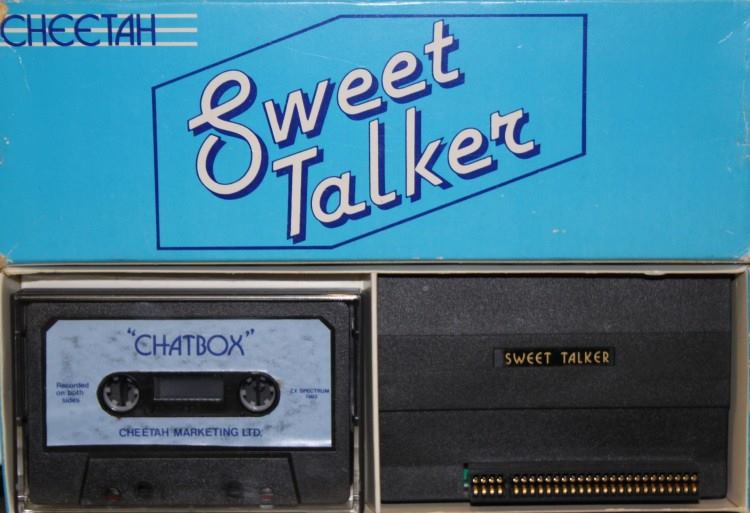
Another Spectrum reference was a photo Richard posted to the official Warp Records twitter account in 2016. This photograph has been modified to appear as if it was digitised and displayed on a ZX Spectrum with is low resolution, graphical limitations and attribute/colour clash. Its possible that Richard really did go through the rigmarole of uploading this image real Spectrum hardware via some convoluted process or modern hardware peripheral. I have a suspicion he created the effect via some sort of emulation via his web browser!
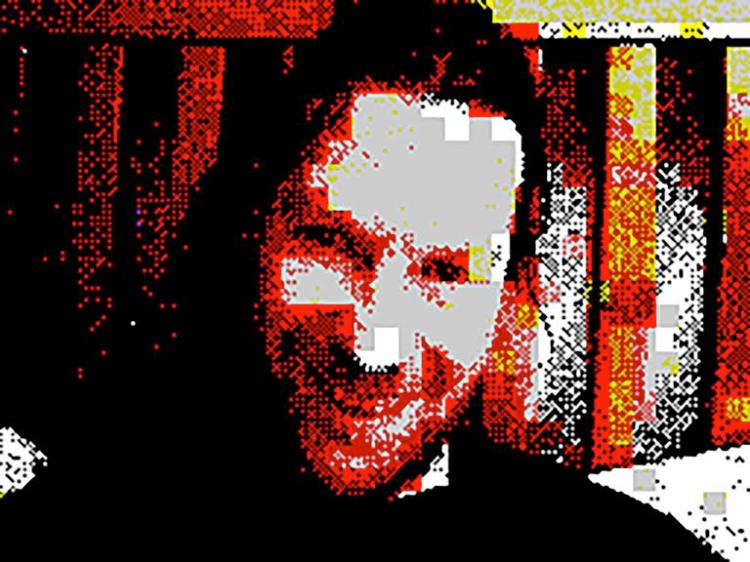

Another amazingly thorough piece, thanks so much. Paul is a legend!
LikeLiked by 1 person
Thanks mate, he’ll be made up with that comment!
LikeLiked by 1 person
Well deserved! I remember those days well. I was a little young to be coding on the Spectrum, but I did some BASIC on an old Acorn Electron and I had a few friends with C64s. Amazing to think that some games took 30 mins plus to load off tape. Its entirely possible that it would actually have been quicker to code something from scratch rather than wait for the tape to load.
LikeLike
Yeah I’m just on the cusp of remembering the end of the spectrum era. We had an acorn electron as well, i think its still in the house somewhere, great little machine! My brother is around Richard’s age so consequently learnt how to program a computer when he was very young on a zx81 & vic20, so he came in very handy when doing research for this article, right up his street all this sort of thing!
LikeLiked by 1 person